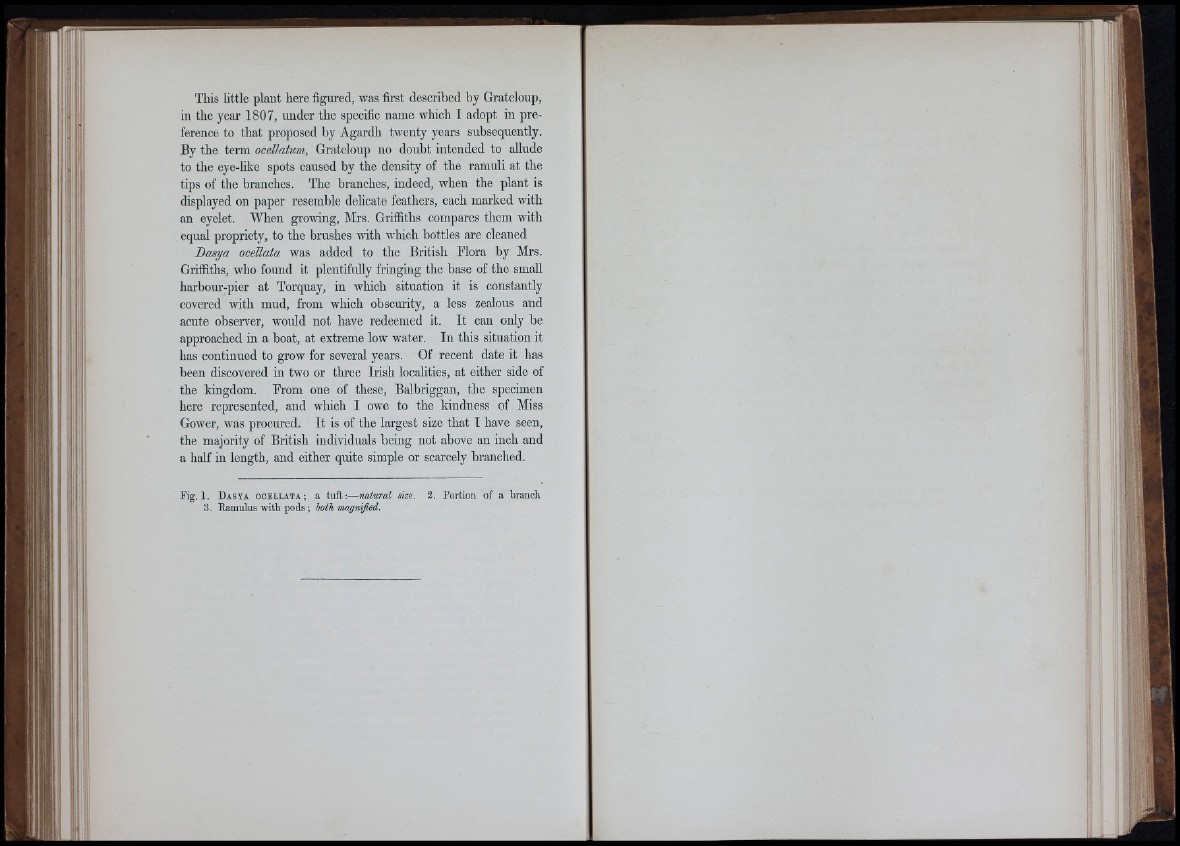
i l
Tliis little plant here figured, was first described by Grateloup,
in the year 1807, under the specific name which I adopt in preference
to that proposed by Agardh twenty years subsequently.
By the term oceUatum, Grateloup no doubt intended to allude
to the eye-like spots caused by the density of the ramuli at the
tips of the branches. The branches, indeed, when the plant is
displayed on paper resemble delicate feathers, each marked with
an eyelet. When growing, Mrs. Griffiths compares them with
equal propriety, to the brushes with which bottles are cleaned
Dasya ocettata was added to the British Flora by Mrs.
Griffiths, who found it plentifully fringing the base of the small
harbour-pier at Torquay, in which situation it is constantly
covered with mud, from which obscurity, a less zealous and
acute observer, woifid not have redeemed it. It can only be
approached in a boat, at extreme low water. In this situation it
has continued to grow for several years. Of recent date it has
been discovered in two or three Irish localities, at either side of
the kingdom. From one of these, Balbriggan, the specimen
here represented, and which I owe to the kindness of Miss
Gower, was procured. It is of the largest size that I have seen,
the majority of British individuals being not above an inch and
a half in length, and either quite simple or scarcely branched.
Fig. 1. D a sya o c e l l a t a ; a tait-.— natural me. 2. Portion of a branch
3. Ramulus with p o d s; both magnijied.
ii II r:lj
I: i 1
ti: ^